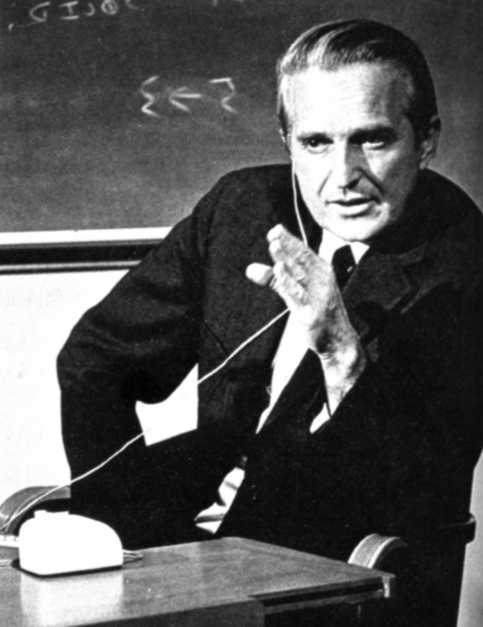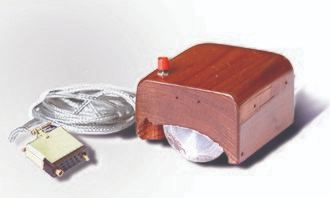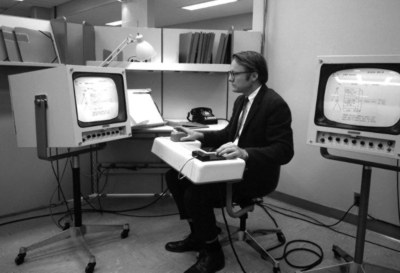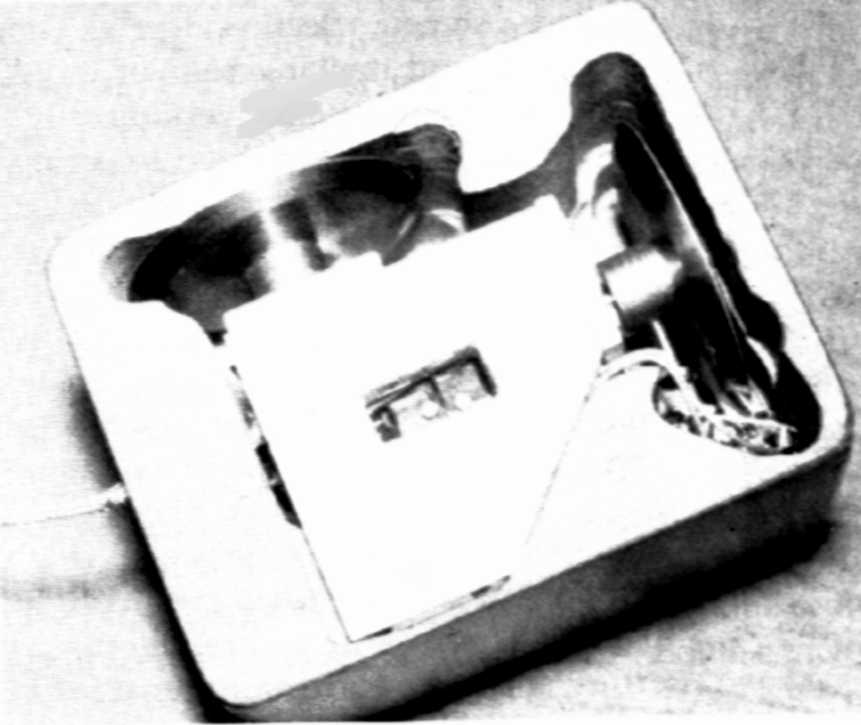| The Mouse's Tale |
| Written by Sue Gee | |||
| Thursday, 06 August 2020 | |||
Page 1 of 2 Desktop computer users take the mouse for granted. But where did it come from and how does it work? The need for pointing devices goes back to the days of World War II when radar operators and others needed ways of aiming guns. Given the connection between war and its highest tech expression, the airplane, it isn't surprising that the first electronic pointing device was the joystick, closely followed by the light-pen. The mouse took some years to think up and it wasn't until 1968 that Douglas Engelbart demonstrated a prototype of a device he called "X-Y position indicator for a display system" as part of the "Mother of All Demos" the presentation he gave to the Fall Joint Computer Conference held in San Francisco. Doug Engelbart in 1968 delivering the Mother of All Demos in which with mouse on the desk in front of him was first "unveiled".
While this was the first time a mouse had been shown in public it was a full five years after the first prototype had been built at the Stanford Research Institute (SRI) and the person who did this was Bill English, working from sketches made by Englebart.
The first prototype of a computer mouse, as designed by Bill English from Douglas Engelbart's sketches The device constructed, and used, by English was a wooden box with two wheels that could be trundled around a desktop. The name mouse followed later, supposedly because of the way the wire coming out of the back looked like a tail. And to think, we were only inches away from it being called a "truck" or a "wooden wheeled brick". Bill English testing the first computer mouse
The first mouse.seen from below.
Bill English was the first person to join Englebart's Augmentation Research Center Lab at SRI and he was the person responsible for putting together the hardware and software required for ground-breaking presentation in 1968 when not only was the mouse introduced to the world, it was also releid upon by both Engelbart and remote participants in what was essentially the first ever tele-conferencing or video-conferencing event.
In 1971 English left and went to Xerox PARC to head Office Systems Research Group, which is now recognized as the incubator of many elements of modern computing in the contemporary office work place. At PARC he developed a ball mouse in which a ball replaced the original set of wheels. This wasn't the first ever ball mouse - that had been developed by Telefunken in Germany. Called Rollkugel, literally "rolling ball" it had become the input device for Telefunken's computers in 1968.
It's all relativeSo what makes the mouse such a good idea? Well the first thing to say is that straight after the mouse was invented it didn't really have much of an impact. It was more or less ignored until Steve Jobs visited the Xerox Parc research centre and "acquired" the ideas he needed to build the Mac. Apple was the first to popularise the mouse and it took the PC ages to catch up. In fact in the early days of the PC mouse there were a number of different ways of implementing a mouse and different mouse drivers. It took the advent of Windows to make the mouse standard issue on the PC and even then it was an "optional" extra for a long time after. The key to the success of the mouse is the simple fact that it is a relative pointing device. It works in conjunction with an onscreen pointer which shows the current position. The mouse is simply used to move the pointer proportionally to the distance the mouse is moved. This probably seems obvious to you but the pointing devices that the mouse superseded didn't work in this way at all – they were absolute devices. The position of a joystick was mapped directly to a position on a screen and the light-pen actually picked a location on the screen by pointing at it. Compare this to the mouse where you can pick it up and move it to a more convenient location without altering the current screen position. |
|||
| Last Updated ( Saturday, 15 August 2020 ) |




